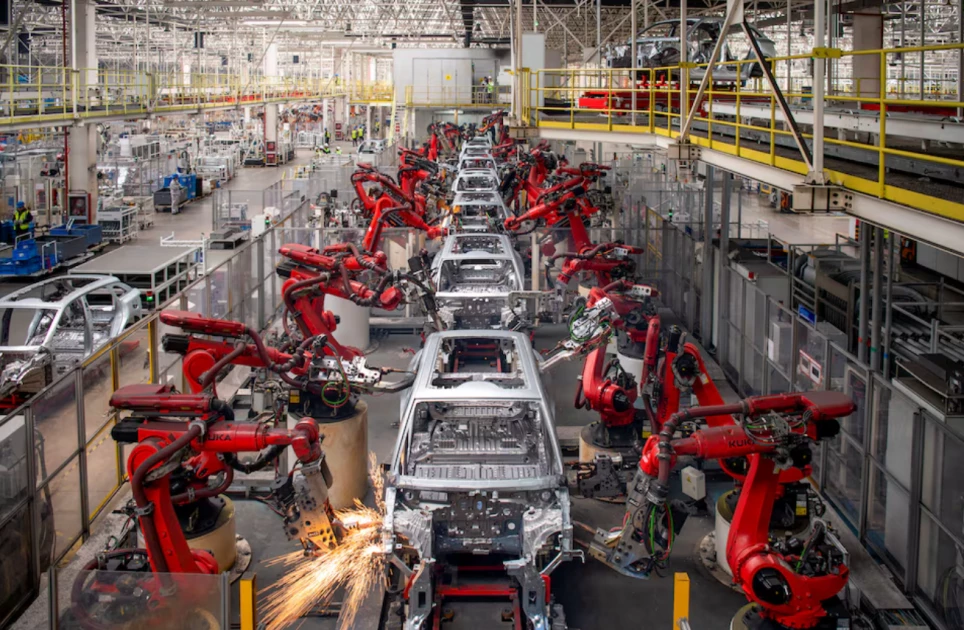China tightens grip on global EV market as consumer confidence soars

Robotic arms assemble cars in the production line for Leapmotor's electric vehicles at a factory in Jinhua, Zhejiang province, China, April 26, 2023. China Daily via REUTERS

Audio By Vocalize
China is
tightening its hold as the world’s dominant force in electric mobility, buoyed
by near-universal satisfaction among its battery electric vehicle (BEV) owners.
A new global
survey by consultancy firm Roland Berger shows that 99 percent of Chinese BEV
users would consider buying another electric car in the future; a level of
consumer confidence unmatched anywhere else.
The findings,
drawn from the firm’s 2025 EV Charging Ecosystem Index survey involving 12,000
respondents worldwide, highlight how strong policy support, homegrown
technological innovation, and consumer enthusiasm have powered China’s electric
vehicle revolution.
According to the
report, which was published by the China Daily, EV penetration worldwide - covering
both fully electric and plug-in hybrid models - climbed from 20 percent in 2023
to 25 percent in 2024.
Yet, China
continues to set the pace: its penetration surged from 36 percent to 49 percent,
further cementing its position as the largest and most dynamic EV market
globally.
Roland Berger
attributes this dominance to China’s rapid expansion of its vehicle fleet,
robust charging infrastructure, and an EV ecosystem that seamlessly connects
manufacturing, energy supply, and digital mobility services - an integration
few other regions have achieved.
While global
adoption grows, regional trends are diverging. In Europe, momentum has waned.
Minor gains in countries such as Belgium, the United Kingdom, and Portugal were
offset by stagnation in France and Italy, while Germany recorded its second
consecutive decline after the government ended BEV subsidies in late 2023.
The consultancy
warns that the European Union’s relaxation of emissions targets could further
dampen near-term progress, even though electrification remains “the long-term
direction of travel” for the continent’s auto industry.
Across the
Atlantic, the transition is far slower. The United States saw EV penetration
rise modestly from 10 to 11 percent in 2024, while Canada climbed from 9 to 15
percent. Mexico, meanwhile, crept up from 1 to 2 percent, signaling steady but
incremental change.
The report also
reveals a notable shift in why people are choosing electric. While
environmental concerns remain important, economic factors - including lower
energy and maintenance costs - are now driving more purchase decisions.
In Asia and North
America, “economic efficiency” has overtaken environmental motivation as the
top reason for going electric, reflecting growing market maturity and
confidence in the long-term cost advantages of EV ownership.
Roughly 80 percent
of EV owners surveyed drive more than 10,000 kilometers a year, with 74 percent
using their vehicles at least four days a week; a sign that EVs are no longer
niche, but mainstream mobility choices.
Charging
infrastructure remains the next frontier. Though 85 percent of BEV owners
globally have home charging access, nearly half of all charging sessions now
happen elsewhere, mainly at shopping malls. Charging speed continues to be the
top global complaint.
But again, China
stands apart. Only 40 percent of Chinese BEV owners expressed dissatisfaction
with public charging speeds; a testament to heavy government investment in
high-power charging networks and continuous infrastructure upgrades.
More than a third
of Chinese respondents said public charging has become more convenient in just
the past six months, the highest satisfaction rate globally.
In July, according
to the China Daily publication, China’s National Development and Reform
Commission directed local authorities to accelerate deployment of high-power
chargers, particularly along highways.
The plan aims to double
the country’s EV charging capacity between 2025 and 2027, with a target of 28
million charging facilities and over 300 million kilowatts of public charging
capacity; enough to serve 80 million EVs.
The nation’s
public charging market is now dominated by five major players - Teld, Star
Charge, YKC, State Grid, and Xiaoju Charge - which collectively control about 70
percent of all public charging stations, providing scale and stability to the
sector.
Roland Berger’s
analysis underscores that China’s success rests on the alignment of industrial
policy, innovation, and consumer behavior, a combination that has delivered
both technological leadership and public trust.
For other regions,
particularly Europe and North America, the Chinese model offers lessons in
linking infrastructure with adoption, nurturing local innovation, and driving
consumer confidence through convenience and economic value.
As the race for
electric dominance continues, China’s head start is poised to shape global
investment, partnerships, and competition in the EV industry for years to come.


Leave a Comment